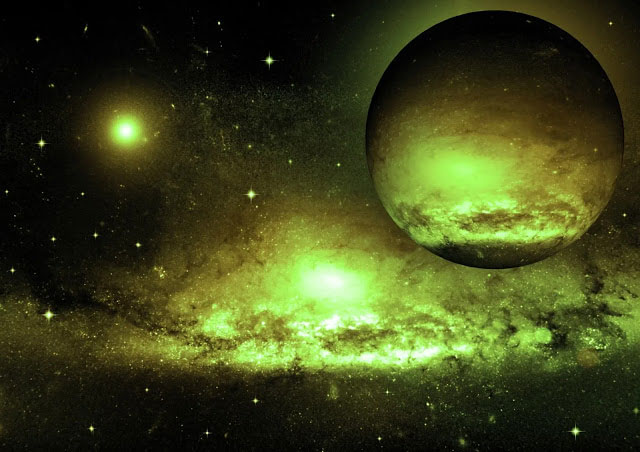'Ghosts' gas reveals traces of alien creatures?
The gas that is hard to smell and toxic to Earth phosphine can help scientists track alien life in other distant solar systems.
The new study is published in the Astrobiology scientific journal, by the Massachusetts Institute of Technology (MIT), based on data on distant planets outside the solar system that are not methane but phosphine itself . a toxic gas for Earth people, may be a sign of alien life.

Phosphine, if found in a distant exoplanet, will be clear evidence of living organisms - (illustration from SHUTTERSTOCK).
Calculation steps show that in planets of the "life zone" of other parent stars, there is a likely absence of oxygen, but there is still the possibility of generating special forms of life. In that oxygen-free environment, organisms will "breathe" phosphine.
On Earth, phosphine (chemical formula PH3) is found in limited quantities in the intestines of humans and fish, in the fields of wet rice, produced during the process of decomposing animal and plant remains, especially bone part. In the ghost yard in the weather , the phosphine can fly up to create a "ghost" phenomenon.
This is a colorless gas, has a garlic odor, is unstable (easy to create a chemical reaction) and needs a lot of energy to form. In oxygen-living organisms, they are toxic by producing a reaction when exposed to oxygen, hindering the cell's ability to use oxygen. Phosphine was used as a chemical weapon in World War I.
At the annual Biological Science Conference in the United States, Dr. Clara Sousa-Silva, a molecular astrophysics expert at MIT, represented the research team, said the conclusions were drawn from tissue experiments. Simulate the process of producing, surviving and destroying phosphine on different planetary extracts. Under certain conditions, it is possible to detect the presence of phosphine and thereby trace the alien creature by analyzing the interaction of phosphine with light.
Unlike methane, phosphine will not cause a "false positive" phenomenon because methane, the gas that also comes from living activities, is thought to be a sign of life, can also be generated from natural phenomena such as thunder, geological activities like volcanoes.
"Any phosphine that can be detected on a temperate planet can only be a sign of life," Dr. Sousa-Silva said.
- Image simulating living creatures on the planet near red dwarfs
- 6 most haunting ghosts of all time
- The ocean in the Earth proves that alien creatures exist?
- 'Alien creatures' Thailand beach horror
- Can aliens look more like fish than humans?
- Deciphering the alien
- Ma often appear in the holidays?
- Prickly with the appearance of monstrous creatures
- 7 signs of ghost identification are simple but can you believe it?
- Traces of the same alien alien herd on Mars
- Concerns about alien creatures
- Detecting alien creatures under the seabed of Indonesia
 Van Allen's belt and evidence that the Apollo 11 mission to the Moon was myth
Van Allen's belt and evidence that the Apollo 11 mission to the Moon was myth The levels of civilization in the universe (Kardashev scale)
The levels of civilization in the universe (Kardashev scale) Today Mars, the sun and the Earth are aligned
Today Mars, the sun and the Earth are aligned The Amazon owner announced a secret plan to build a space base for thousands of people
The Amazon owner announced a secret plan to build a space base for thousands of people